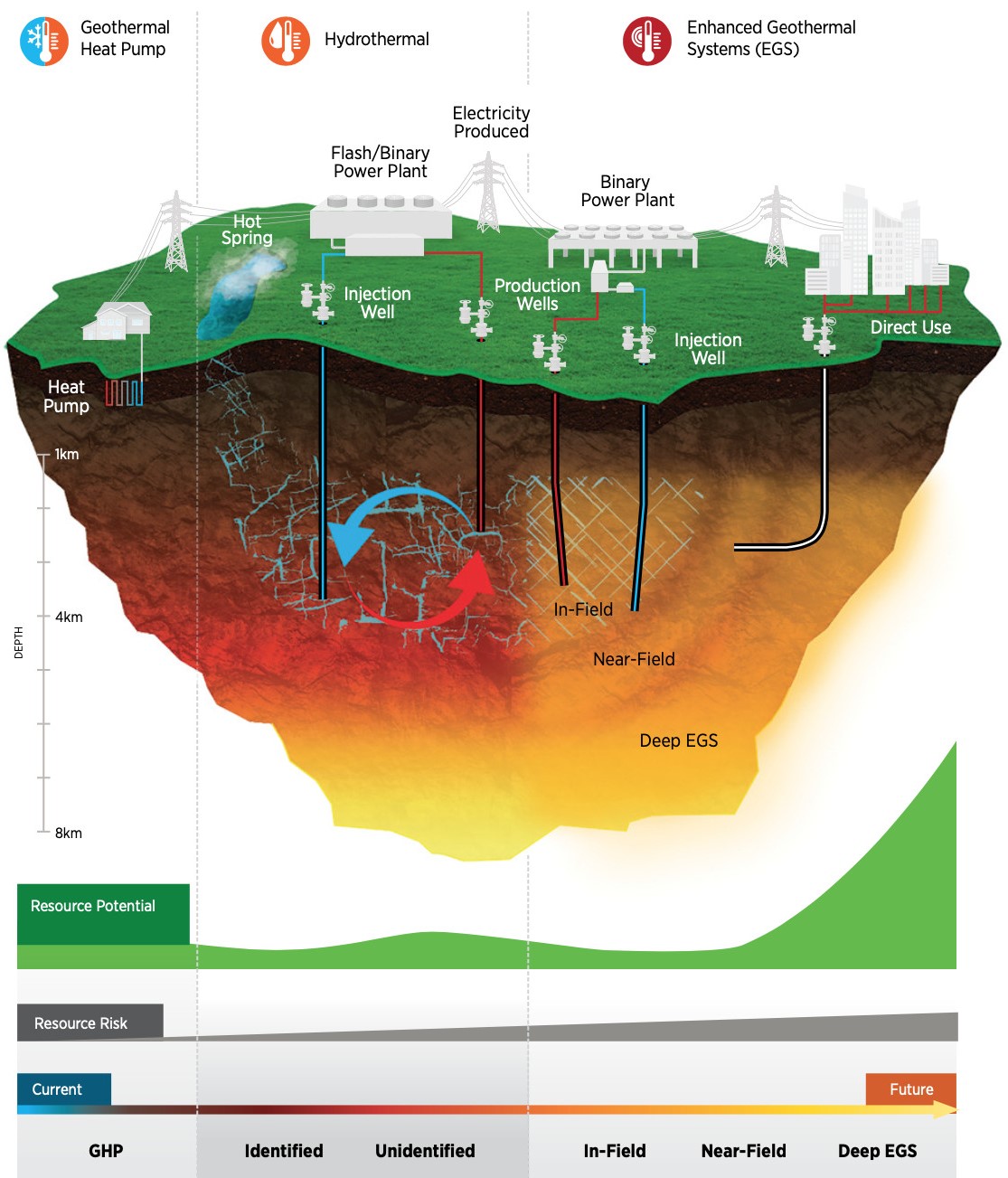
Digging Deep for Clean Energy: Exploring Geothermal Power
Geothermal energy is an excellent source of clean energy that can be used to reduce dependence on fossil fuels. It involves harnessing the heat that is generated by the Earth’s core to produce electricity. This process is becoming increasingly popular as people become more aware of the negative impact that fossil fuels have on the environment. In this article, we will explore the concept of geothermal energy, how it works, and the potential it holds for the future of renewable energy.
What is Geothermal Energy?
Geothermal energy is the heat that is generated by the Earth’s core. It is a renewable source of energy that can be used to generate electricity. Geothermal energy can be harnessed through the use of geothermal power plants, which work by drilling deep into the Earth’s crust to access the heat that is generated by the Earth’s core.
The Science Behind Geothermal Energy
The Earth’s core is extremely hot, with temperatures exceeding 6,000 degrees Celsius. This heat is generated by the natural decay of radioactive elements such as uranium and thorium. The heat is transferred from the core to the Earth’s surface through conduction and convection. The heat is stored in rocks and fluids, such as water, which can be accessed through geothermal wells.
The Different Types of Geothermal Energy Systems
There are two main types of geothermal energy systems: direct-use systems and power plants. Direct-use systems involve using the heat from geothermal sources directly for heating and cooling buildings, greenhouses, and industrial processes. Geothermal power plants use geothermal energy to generate electricity.
The Advantages of Geothermal Energy
There are several advantages to using geothermal energy. It is a renewable source of energy that does not produce greenhouse gases. It is also reliable, as geothermal power plants can operate 24 hours a day, seven days a week. Additionally, geothermal power plants have a small land footprint and can be built in remote areas, which can reduce transmission costs.
The Disadvantages of Geothermal Energy
One of the main disadvantages of geothermal energy is that it is location-specific. Geothermal energy sources are not available in all areas, and the cost of drilling deep wells can be expensive. Additionally, geothermal power plants can produce hydrogen sulfide and other gases, which can have negative impacts on air quality.
The Global Potential of Geothermal Energy
Geothermal energy has the potential to provide a significant amount of the world’s electricity. According to the International Energy Agency, geothermal energy could provide up to 3.5% of the world’s electricity by 2050. The largest geothermal power producer in the world is the United States, followed by the Philippines, Indonesia, and Mexico.
The History of Geothermal Energy
The use of geothermal energy dates back thousands of years. The ancient Romans used geothermal energy for heating baths and homes. In the 20th century, geothermal energy was used for direct-use applications, such as heating greenhouses and swimming pools. The first geothermal power plant was built in Italy in 1904.
Geothermal Energy in the United States
The United States is the largest producer of geothermal energy in the world, with geothermal power plants located in California, Nevada, Oregon, Hawaii, and Utah. Geothermal energy provides around 3% of the country’s total electricity generation. The Geysers, located in California, is the largest geothermal field in the world, producing around 1.3 GW of electricity.
Geothermal Energy in Europe
Europe has significant geothermal resources, with power plants located in Iceland, Italy, France, Germany, and Turkey. Iceland generates around 26% of its electricity from geothermal energy, while Italy generates around 1.8%.
Geothermal Energy in Asia
Asia has some of the largest geothermal resources in the world, with power plants located in Indonesia, the Philippines, Japan, and China. Indonesia is the second-largest producer of geothermal energy in the world, with power plants generating around 2.1 GW of electricity.
Geothermal Energy in Africa
Africa has significant geothermal resources, with power plants located in Kenya, Ethiopia, and Tanzania. Kenya is the largest producer of geothermal energy in Africa, with power plants generating around 0.7 GW of electricity.
Geothermal Energy in South America
South America has significant geothermal resources, with power plants located in Chile, Peru, and Argentina. Chile is the largest producer of geothermal energy in South America, with power plants generating around 0.2 GW of electricity.
Geothermal Energy in Australia
Australia has limited geothermal resources, with power plants located in South Australia and Western Australia. The potential for geothermal energy in Australia is still being explored.
The Future of Geothermal Energy
Geothermal energy has significant potential as a source of clean energy. Advancements in drilling technology and heat exchange systems are making geothermal energy more accessible and cost-effective. Additionally, the use of geothermal energy for direct-use applications, such as heating and cooling buildings, is becoming more common. As the world moves towards a more sustainable future, geothermal energy is expected to play a larger role in meeting energy demands.
Conclusion
Geothermal energy is a clean and reliable source of energy that can be used to reduce dependence on fossil fuels. While there are challenges associated with harnessing geothermal energy, advancements in technology are making it more accessible and cost-effective. Geothermal energy has the potential to provide a significant amount of the world’s electricity, and its use is expected to grow in the coming years.
FAQs
- What is geothermal energy?
Geothermal energy is the heat that is generated by the Earth’s core. It can be harnessed through the use of geothermal power plants or direct-use systems. - What are the advantages of geothermal energy?
Geothermal energy is a renewable source of energy that does not produce greenhouse gases. It is also reliable and has a small land footprint. - What are the disadvantages of geothermal energy?
Geothermal energy is location-specific, and the cost of drilling deep wells can be expensive. Additionally, geothermal power plants can produce hydrogen sulfide and other gases, which can have negative impacts on air quality. - Which countries produce the most geothermal energy?
The United States is the largest producer of geothermal energy in the world, followed by the Philippines, Indonesia, and Mexico. - What is the potential of geothermal energy?
Geothermal energy has the potential to provide a significant amount of the world’s electricity, with estimates suggesting it could provide up to 3.5% of the world’s electricity by 2050.
